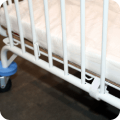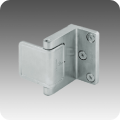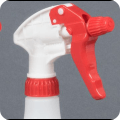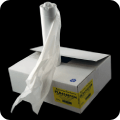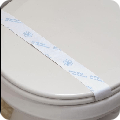20 FAQs on SBA Disaster Assistance Loan – COVID 19
Small businesses throughout the U.S. have been adversely affected by the novel coronavirus pandemic. With people struggling to keep their businesses afloat and some even shutting down, the federal government is trying its best to help small businesses stay in business.
The Coronavirus Preparedness and Response Supplemental Appropriations Act was passed on 6th March, 2020 enabling the U.S. Small Business Administration (SBA) to provide $7 billion in low-
interest loans to small businesses impacted by the novel coronavirus.
If you want to apply for the loan but do not know anything about it, these 20 FAQs will give you an idea.
01.
- A small business with 500 or fewer employees
- An individual who operates under as a sole proprietorship, with or without employees, or as an
independent contractor - A private non-profit or small agricultural cooperative
- Your business must be directly affected by the COVID-19 pandemic
02.
Yes. The time in business criteria have been waived for this loan. However, your business must be in operation by the date of the declared disaster. For COVID-19 related cases, the date is January 31, 2020.
03.
All states and U.S. territories are eligible to apply for the disaster loan
04.
You will need to fill out the appropriate forms available online.
05.
The loan is to be processed in 21 days.
06.
The SBA’s Economic Injury Disaster Loan program provides small businesses with working capital loans of up to $2 million.
07.
Small businesses will be charged 3.75% interest rate, while a non-profit organisation will be charged an interest rate of 2.75%.
08.
The disaster loan is to help you pay the bill you cannot pay because of the COVID-19 virus pandemic. It can be used to cover business expenses like payroll, accounts payable, equipment and machinery purchases, real estate payments, and so on.
09.
In an effort to keep the payments affordable, the SBA loans come with long-term repayment options. Though long-terms will be determined on a case-to-case basis, you can get a loan tenure of up to a maximum 30 years.
10.
Yes, you can prepay the entire loan amount early. There will be no prepayment penalty.
11.
There is no minimum credit score requirement. However, the SBA does look for an acceptable credit score history.
12.
Personal guarantee has been waived for the COVID-19 disaster loans up to $200,000. For loans over $200,000, collateral will be required if available. However, your application will not be turned down solely because there is no collateral.
13.
The CARES Act signed by President Trump on March 27, 2020 allows the SBA administrator to waive the tax return requirement for these loans.
14.
- Business tax return if filed for 2019 or your year-end profit and loss statement for 2019 and balance sheet and the most recently filed business tax return
- Year-to-date profit and loss statement for 2020
15.
U.S. Small Business Administration Administrator Jovita Carranza has announced that borrowers who are still repaying the SBA loans from a previous disaster too can avail of this new disaster loan. The payment of the previous loan will automatically be deferred through December 31,2020. Therefore, you do not need to contact the SBA for a deferment if you are already paying back a disaster loan.
Note: There is a total limit of $5 million of SBA loan assistance.
16.
No. The first disbursement will be up to $25,000, followed by other disbursements.
17.
You can fill out two different application forms.
18.
You will need to start paying back after one year, but note that interest will accrue.
19.
You can apply for reconsideration after six months.
20.
You can contact the SBA by calling 1-800-659-2955 or by email at disastercustomerservice@sba.gov. SBA has also coordinated with the Resource Partners, including Small Business DevelopmentcCenters, (SBDCs) who can assist with the application process. The list of SBDCs is available online.
Sources:
 To become a distributor
To become a distributor

















